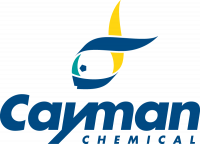Cookie preferences
This website uses cookies, which are necessary for the technical operation of the website and are always set. Other cookies, which increase the comfort when using this website, are used for direct advertising or to facilitate interaction with other websites and social networks, are only set with your consent.
Configuration
Technically required
These cookies are necessary for the basic functions of the shop.
"Allow all cookies" cookie
"Decline all cookies" cookie
CSRF token
Cookie preferences
Currency change
Customer-specific caching
FACT-Finder tracking
Individual prices
Selected shop
Session
Comfort functions
These cookies are used to make the shopping experience even more appealing, for example for the recognition of the visitor.
Note
Show the facebook fanpage in the right blod sidebar
Statistics & Tracking
Affiliate program
Conversion and usertracking via Google Tag Manager
Track device being used

| Item number | Size | Datasheet | Manual | SDS | Delivery time | Quantity | Price |
|---|---|---|---|---|---|---|---|
| Cay21016-1 | 1 mg | - |
6 - 10 business days* |
28.00€
|
|||
| Cay21016-5 | 5 mg | - |
6 - 10 business days* |
69.00€
|
If you have any questions, please use our Contact Form.
You can also order by e-mail: info@biomol.com
Larger quantity required? Request bulk
You can also order by e-mail: info@biomol.com
Larger quantity required? Request bulk
9-(2,2-Dicyanovinyl)julolidine (DCVJ) is a fluorogenic dye that is considered a fluorescent... more
Product information "9-(2,2-Dicyanovinyl)julolidine"
9-(2,2-Dicyanovinyl)julolidine (DCVJ) is a fluorogenic dye that is considered a fluorescent molecular rotor because its properties depend on the rotational relaxation of the molecule, which can be influenced by the viscosity of the solvent used. It has an excitation maximum at approximately 450 nm, and its emission is approximately 480 or 505 nm for low or high viscosity solvents, respectively. DCVJ has been used to study tubulin dynamics because its fluorescence increases when bound to tubulin sheets but is lower when bound to microtubules.Formal Name: 2-[(2,3,6,7-tetrahydro-1H,5H-benzo[ij]quinolizin-9-yl)methylene]-propanedinitrile. CAS Number: 58293-56-4. Synonyms: DCVJ, 9-Julolidine Methylene Malononitrile, NSC 160064. Molecular Formula: C16H15N3. Formula Weight: 249.3. Purity: >98%. Emission: 480 nm (low viscosity solvents), 505 nm (high viscosity solvents). Excitation: 450 nm. Formulation: (Request formulation change), A crystalline solid. Solubility: DMF: 20 mg/ml, DMSO: 20 mg/ml, DMSO:PBS (pH 7.2) (1:2): 0.33 mg/ml, Ethanol: 0.2 mg/ml. lambdamax: 455 nm. SMILES: N#C/C(C#N)=C\C1=CC2=C3N(CCC2)CCCC3=C1. InChi Code: InChI=1S/C16H15N3/c17-10-13(11-18)7-12-8-14-3-1-5-19-6-2-4-15(9-12)16(14)19/h7-9H,1-6H2. InChi Key: LROAUBRDKLVBCP-UHFFFAOYSA-N.
| Keywords: | 9-Julolidine Methylene Malononitrile, DCVJ, NSC 160064, 2-[(2,3,6,7-tetrahydro-1H,5H-benzo[ij]quinolizin-9-yl)methylene]-propanedinitrile |
| Supplier: | Cayman Chemical |
| Supplier-Nr: | 21016 |
Properties
| Application: | Fluorescent probe |
| MW: | 249.3 D |
| Formula: | C16H15N3 |
| Purity: | >98% |
| Format: | Crystalline Solid |
Database Information
| CAS : | 58293-56-4| Matching products |
Handling & Safety
| Storage: | -20°C |
| Shipping: | +20°C (International: -20°C) |
| Signal Word: | Warning |
| GHS Hazard Pictograms: |
|
| H Phrases: | H315, H319, H335 |
| P Phrases: | P261, P264, P271, P280, P312, P321, P302+P352, P304+P340, P305+P351+P338, P332+P313, P337+P313, P362+P364, P405, P403+P233, P501 |
Caution
Our products are for laboratory research use only: Not for administration to humans!
Our products are for laboratory research use only: Not for administration to humans!
Information about the product reference will follow.
more
You will get a certificate here
Viewed

